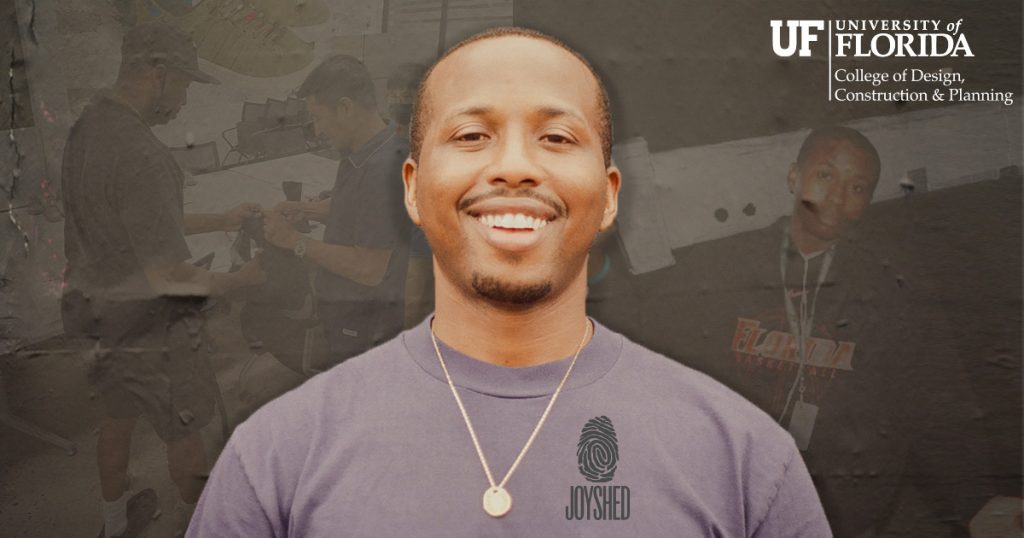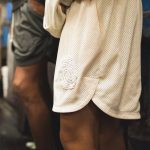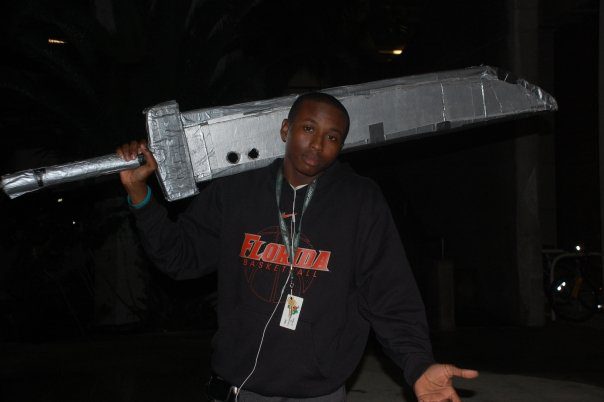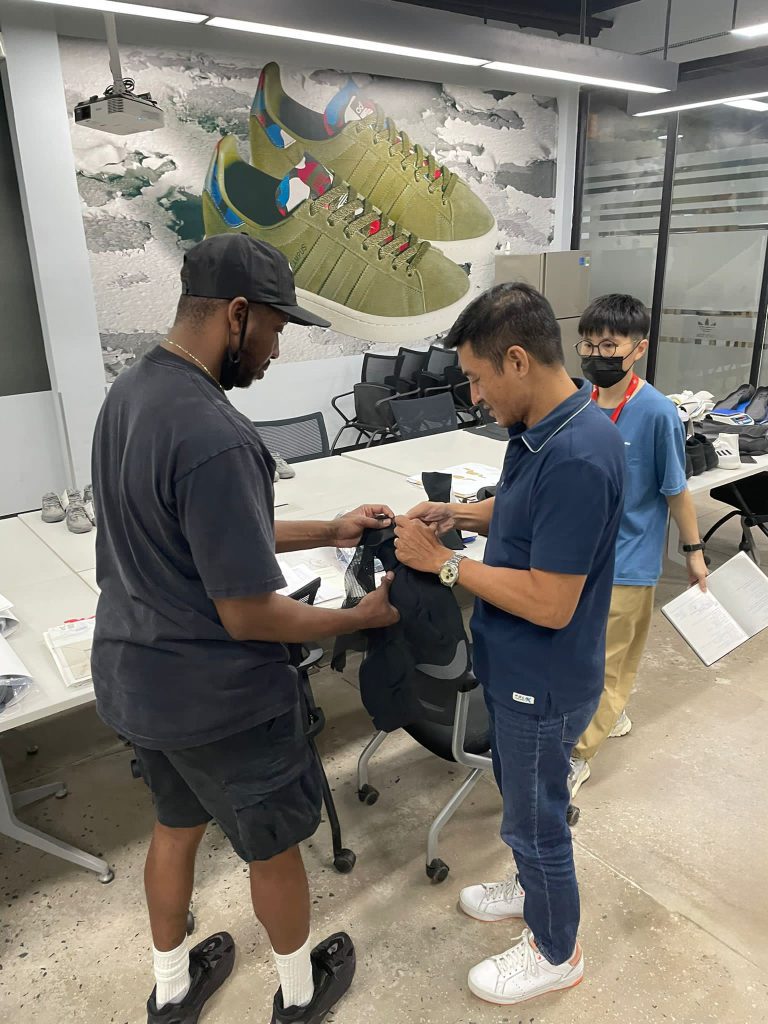
Thursday, February 1, 2024
By: Tatiana Rodriguez
In his last year studying architecture at the University of Florida College of Design, Construction and Planning, Randall Yarborough (BDES ’11) entered a Nike Future Sole competition. It was his first time venturing into the world of design through apparel and graphics. The competition afforded him the opportunity to visit Nike’s campus in Oregon and meet individuals working in the footwear industry.
It was that moment when he knew that he wanted to switch his focus to designing something smaller scale.
“Footwear is like small-scale architecture,” Randall said. “It is literally the same thing – you’re just getting a little bit more personal, and the dimensions and the scales are different.”
So, after graduating from UF with a bachelor’s degree in architecture, Randall pursued a graduate degree in industrial design at the Rochester Institute of Technology. Afterwards, he was offered a position at SKLZ, a sports performance training equipment company in Carlsbad, California. He said it was like the “child of architecture, product design and sports, just meshed together,” and exactly what he wanted to do to start his career. Having worked there for four years, he gained valuable insight into various design processes before eventually applying his skill sets and passion to creating footwear, apparel, and architecture with the Adidas YEEZY team in Calabasas, California.

Now, Randall is the founder and creative director of Joyshed, a fashion athletic lifestyle brand. Its name stems from the two places he calls home: Joy Road in Detroit, Michigan, and Hollingshed Road, in Irmo, South Carolina.
“I was like, okay I need to make sure I find a way to cherish both of these locations to make sure that neither one gets left behind or that either place or the people there don’t feel like I missed out on them,” Randall said.
Randall said that Joyshed stemmed from the desire to create something that was personal to himself. The idea for Joyshed started four years ago, and now, the company has recently launched its first drop: a lifestyle-based performance style short.
He explained that the most rewarding part of the project was just being able to get it out and have a weight lifted off his shoulders.
“A lot of times, people have ideas, but they don’t execute them. Or they want to do something, but they don’t try. The ability to just put something out there and try something is half the battle that people don’t even think about.”
Differentiating Joyshed from other comparable brands on the market, Randall wanted to focus on domestic production—creating its line entirely in LA and sourcing exclusively from United States-based suppliers. From a design standpoint, he explained that the mesh shorts are double-layered and have a nice weight to them. They don’t feel light and cheap like other brands. They also have a puff print, where the fabric is screen printed and then runs through a heat tunnel and has a chemical reaction that adds a unique puffed effect to its logo.
The logo was based on Randall’s thumbprint, which is meant to signify him being hands on with the product. Still, he mentioned that it also should be interpreted as not only him, but everyone else who has touched it through the product creation cycle.
Reflecting on his time at UF, Randall laughed thinking about his memories playing a dodgeball soccer game in the Atrium with his friends. But he said that his favorite memory was just how much of a family DCP was. He recalled spending late nights at DCP because he lived and breathed it.

“With architecture, you have the ability to adapt and create almost anything, like products, footwear, or furniture. But you can’t do the opposite. Architecture gave us a baseline, whether it was sketching, building by hand or doing blueprints. You have a childlike mind and you’re taking in everything and learning everything before you start to apply it. DCP provided the baseline things that you’re able to translate to different areas.”
He also is grateful for the DCP network of graduates. He mentioned several people that he stays in touch with and said that it is important to have a group of people that are like a support system and willing to reach out and help each other. He said that some of them supported his brand by buying his product and that he and some friends still bounce ideas off each other.
Randall’s advice to prospective DCP students is to stay curious, and sketch and save as much of your work as possible.
“Stay curious and stay focused. That’s what I try to do even now. Every time I go into a new design or creation, I just try to stay curious about the process. And if I don’t know something or understand something, I ask questions. Even if it’s annoying, at the end of the day, you’ll still get an answer, and that’s the most important part.”
